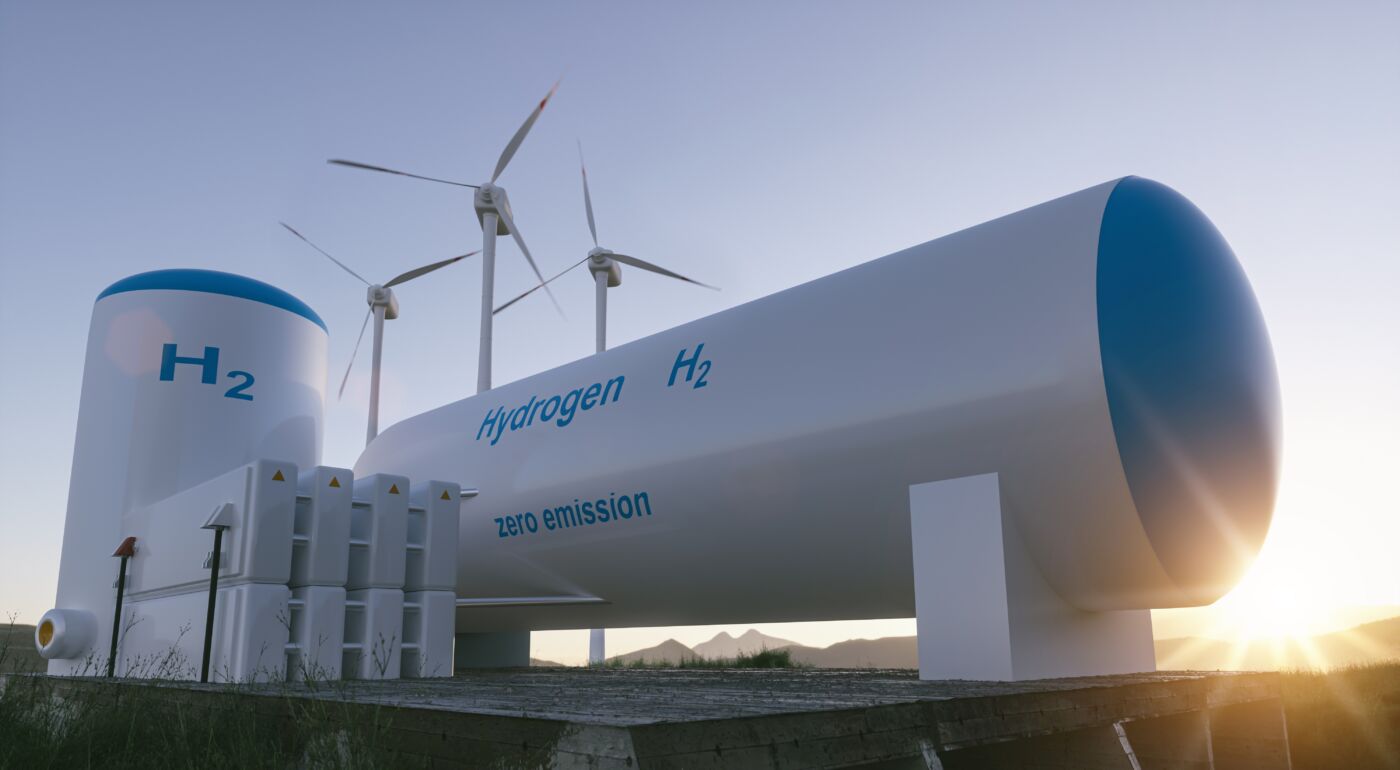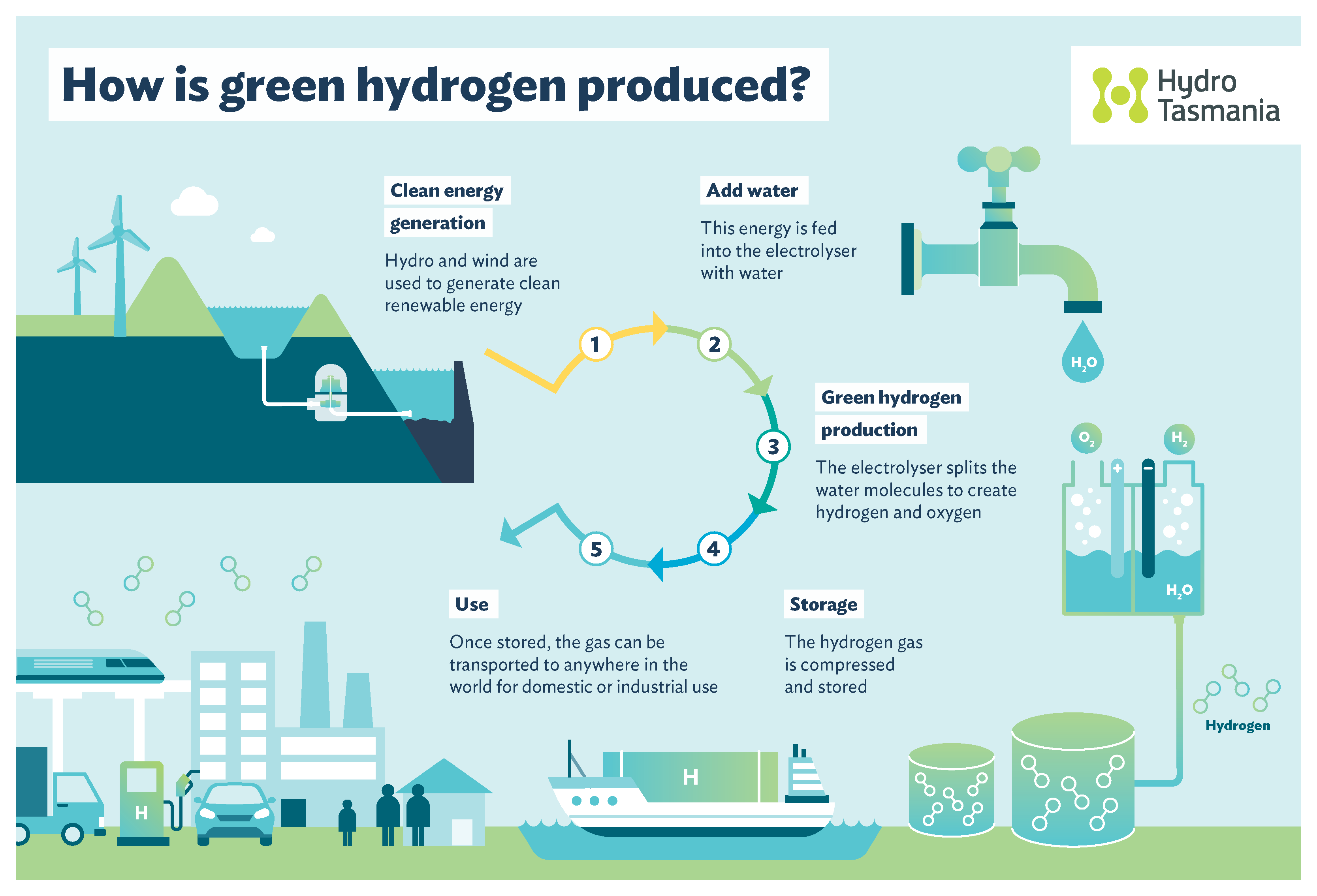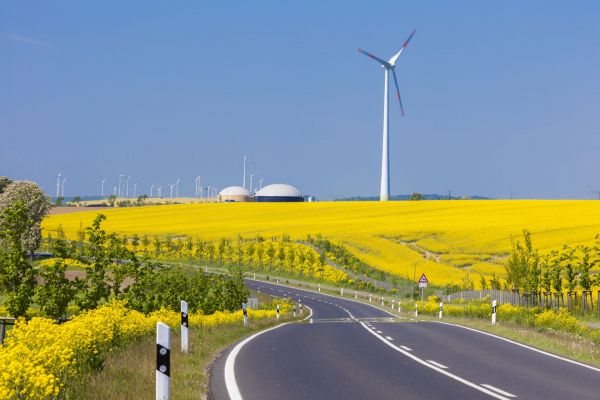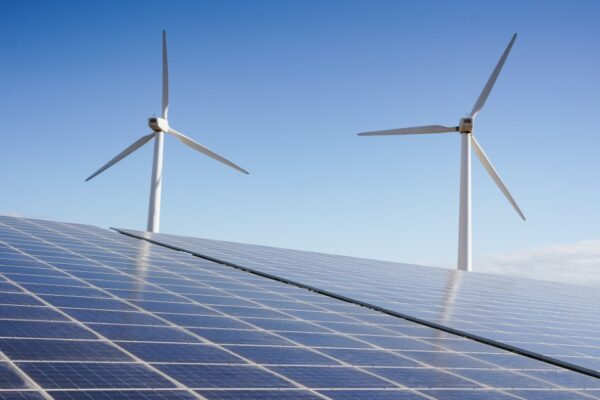Wind turbine operators rely on hydrogen in a number of ways. It is most commonly used to store surplus wind energy sustainably. This makes it easier and cheaper to store the energy generated, with less loss than in batteries. In addition, hydrogen (H2) can be used to generate electricity or heat and can even be used as fuel for vehicles. However, not all hydrogen is the same – depending on how the colorless gas is produced, different terms are used.
Green, gray, blue?
As the name suggests, green hydrogen is the most climate friendly. Hydrogen (H2) itself is produced via electrolysis. Here’s how companies tackle the process:
Sustainable energy is produced with the help of wind turbines, among other things. Then, the sustainably produced energy is fed to a certain amount of water (H2O). The energy splits the water molecules and thus creates hydrogen and oxygen (O2). The O2 is released into the environment and the gaseous H2 is compressed and stored in tanks. In this way, the hydrogen can be easily transported everywhere. Wind energy and the production of H2 go hand in hand.
The production of green H2 is the only truly climate-friendly method as gray hydrogen requires natural gas. Methane (CH4) is produced during production alone. With the help of heat, it is converted from natural gas into H2 and CO2 – the carbon dioxide is released unfiltered into the atmosphere, thereby increasing the greenhouse effect.
The Production of One Ton of Hydrogen Generates Ten Tons of CO2.
The production of blue hydrogen works similarly. However, in this so-called CSS (Carbon Capture and Storage) process the “waste product” CO2 is split off and then stored underground at high costs and risks.
Green gets profitable
The production of green hydrogen is becoming more and more efficient – but it still cannot keep up with blue. Currently, a maximum of 60 percent of the energy used in electrolysis is bound in hydrogen and the production costs are about 16.5 ct/kWh H2. The cost of blue hydrogen, on the other hand, is only 6.3 ct/kWh H2 on average. However, the efficiency of green H2 is expected to increase rapidly in the next few years, while the costs will decrease.
In general, it is clear that the cheaper renewable electricity is produced, the cheaper the production of green H2 will be. This makes it all the more rewarding that the acceptance of sustainable energy production has already increased significantly over the past few years. A further cost advantage comes when electrolysis is further developed. The Kopernikus project Power-to-X (P2X) provides an example of the progress made in this process: Electrolysis requires a larger quantity of the rare element iridium – but the project participants were able to reduce the requirement by a factor of ten. A step in the right direction.
Competitive by 2030
The trend is clear: Green hydrogen is becoming cheaper and cheaper and thus more profitable. A study by the data and information company IHS Markit recently found that green H2 costs will decrease by a similar amount as blue hydrogen by 2030.
The cost of producing green hydrogen has fallen by 50 percent since 2015 and could be reduced by a further 30 percent by 2025, partly because of the benefits of scaling and more standardized production.
According to the analysts at IHS Markit, investments in climate-neutral hydrogen projects are increasing: The 30 million US dollars invested in 2019 should grow to more than 700 million US dollars by 2023. This rise is also related to the increasing expansion of renewable energies. Europe alone is multiplying its spending on wind energy enormously, not only because of the Green Deal. This increase could give the wind industry new momentum, but above all revolutionize other, more climate-damaging sectors such as the chemical and steel industries.




